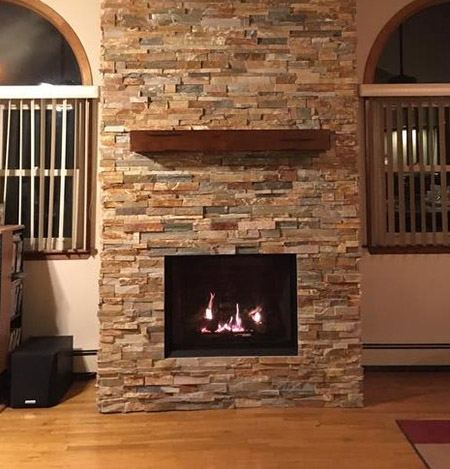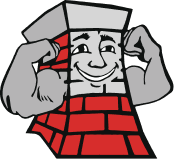Yes, Your Gas Fireplaces Needs to be Inspected Annually
 Gas fireplaces allow us to enjoy the pleasure of a glowing hearth without the mess and hassle of burning wood. Since you never have to get your hands dirty cleaning ash out of the firebox or worry about scheduling a chimney cleaning to remove creosote buildup, you might not think about scheduling an annual inspection either. Even though gas fireplaces are low maintenance appliances, they aren’t maintenance free. Neglecting to have your gas fireplace inspected annually could have catastrophic consequences.
Gas fireplaces allow us to enjoy the pleasure of a glowing hearth without the mess and hassle of burning wood. Since you never have to get your hands dirty cleaning ash out of the firebox or worry about scheduling a chimney cleaning to remove creosote buildup, you might not think about scheduling an annual inspection either. Even though gas fireplaces are low maintenance appliances, they aren’t maintenance free. Neglecting to have your gas fireplace inspected annually could have catastrophic consequences.
Risks of Skipping a Gas Fireplace Inspection
If your gas fireplace is not venting properly or malfunctions there can be grave results such as:
– Fire
– Explosion
– Carbon Monoxide Poisoning
The 3 Most Common Gas Fireplace Problems
#1 – Blocked Vent
Even though you don’t have to worry about creosote and ash clogging up the chimney, the venting system of a gas fireplace can still become obstructed. A blocked vent is the number one cause of fires and carbon monoxide poisoning by gas fireplaces.
The venting system of a gas fireplace ensures that any carbon monoxide (an odorless and tasteless poisonous gas) that is produced during the combustion process safely vents outside. If the venting system is obstructed, this gas commonly called the “silent killer,” can leak into your home. You might not know carbon monoxide is leaking into your home until it is too late if you do not have a functioning carbon monoxide detector.
Gas leaks are also more likely to result in a fire or explosion if the venting system is blocked because all of the gases accumulate inside your home.
If you have a natural-vent gas fireplace (which vents combustion gases through a chimney) or a direct-vent fireplace (which vents combustion gases outside through a pipe that runs through the walls or roof) the venting system should be inspected at least once a year to ensure that it is not damaged or clogged. Animal nests and lawn debris, such as leaves and twigs, are common reasons that vents become blocked. The flue or exhaust pipe can also become obstructed if it is warped from excess moisture that has gotten into the venting system.
Vent-free gas fireplaces are the only ones that do not have a venting system. There are other risks associated with vent-free fireplaces that can be prevented by annual maintenance and inspections.
#2 – Malfunctioning Fireplace Components
The internal mechanisms, connections and valves in a gas fireplace that make it so easy to operate can become hazards if they aren’t working properly. For example, if the gas and pilot light are both on but the burners in the fireplace do not light because the thermocouple or thermopile malfunction, an explosion can occur that shatters the glass doors of the fireplace and turns the glass into shrapnel.
If you have a vent-free fireplace, malfunctioning fireplace components can cause carbon monoxide poisoning. The reason that vent-free gas fireplaces do not require a venting system is because they are designed to have a complete combustion process that produces zero carbon-monoxide. If there is a problem with the combustion system, your fireplace will produce carbon monoxide that has nowhere else to escape to besides your home.
There are many reasons why a gas fireplace might malfunction such as lack of use, improper installation, and damage from rough or careless cleaning or poor maintenance. The best way to ensure your gas fireplace operates correctly is to schedule your annual inspection in the late summer or fall before you light it up to keep out the cold.
#3 – Dirty, Worn Out & Damaged Fireplace Components
Gas fireplace systems are more fragile than many people realize. The natural accumulation of dust, dirt and hair on the fireplace components along with normal wear and tear can be the root cause of gas fireplace problems and risks. Even something as simple as a chip in the glass of the fireplace doors can spark a small explosion.
Regular cleaning and maintenance is important whether or not you use your fireplace frequently. Spider webs clogging the pilot tubes and burners are a common problem for homeowners who rarely use their gas fireplace and turn off the pilot light. Spiders are attracted to the chemical Mercaptan that is added to natural gas. If a spider gets into the system and make webs in the valves, its webs can completely block the flow of gas to the pilot light or burners.
Before you light up your fireplace, it is wise to have it inspected to make sure there are no dirty, worn out or damaged components that need to be addressed with repair or maintenance. The most common maintenance issues that we come across are:
 – Clogged ports
– Clogged ports
– Faulty pilot lights
– Dirty or damaged thermopiles and thermocouples
– Corroded burners
– Loose connections
– Scratches or chips in the glass fireplace doors
– Loose fireplace doors
If you are ready to setup an inspection for your gas fireplace, give us a call! We have the best team of fireplace experts in Central Connecticut who have all been qualified by the Chimney Safety Institute of America (). You can count on us to do a thorough inspection and high quality maintenance because we take your safety seriously!


